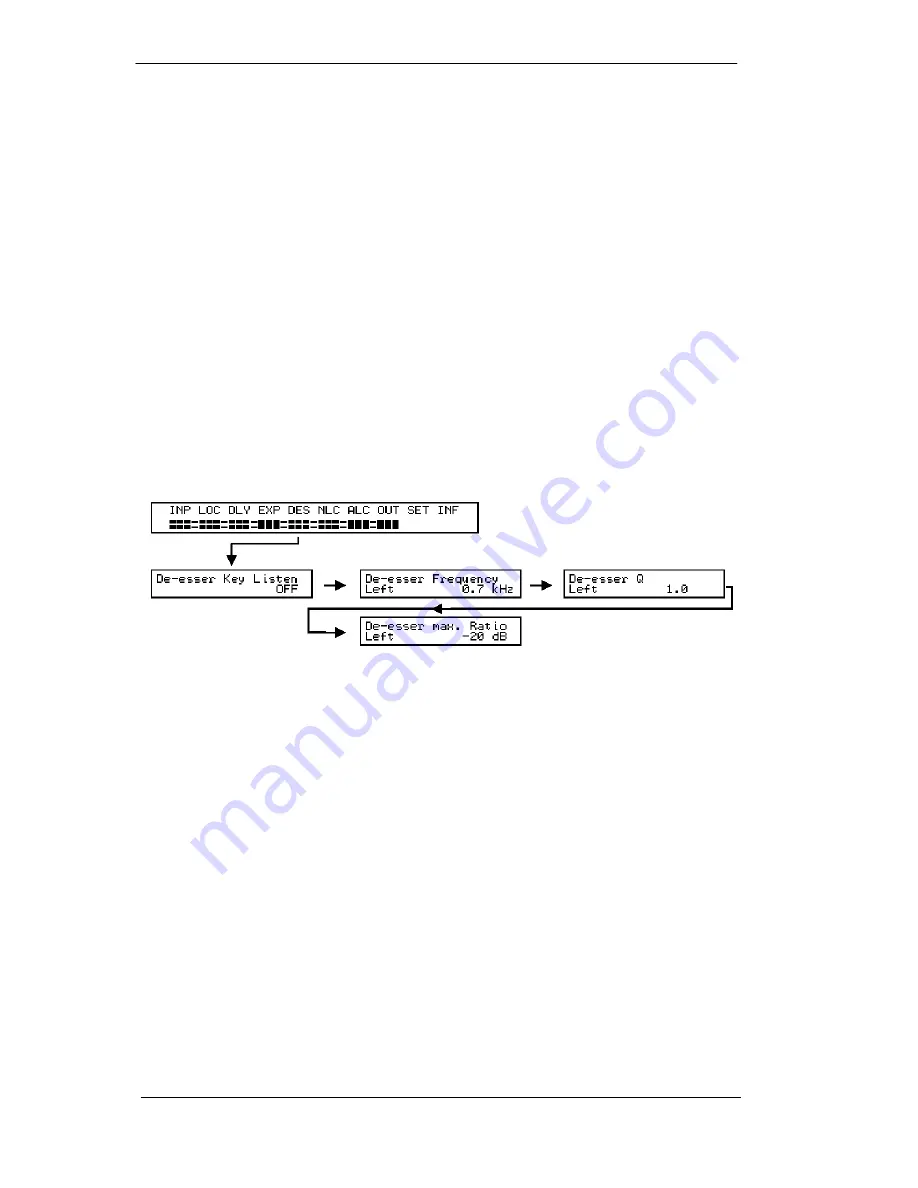
18
User's Guide
ADI-96 PRO © RME
9.5 De-esser
Function
Selective dynamic level limiter with automated relative level control. Removes disturbing sibi-
lants on speech and vocal recordings, or other level peaks present in its operating range.
Application
In general there are several methods used to reduce sibilants:
Fixed bandpass
- an Equalizer with fixed cut in the sibilant frequency area. Results in a con-
stant muffled sound. Not useable on masters.
Dynamic lowpass
- cuts all high frequencies according to the level found in the sibilant area.
Requires a threshold setting adopted to the actual signal. Not useable on masters.
Dynamic bandpass
- Requires a threshold setting adopted to the actual signal.
The method used in the
ADI-96 PRO
is a dynamic bandpass with all its advantages, but
does no longer need a threshold to be set according to the actual signal. Using an automated
relative function the overall level is compared to the level in the sibilant area, the threshold is
automatically set to always achieve the same sound. The level of the actual signal doesn't mat-
ter anymore.
Settings
Place the cursor in the Overview window on
DES
and press Enter.
Menu
Options
Adjustable are:
•
Key Listen. Allows to monitor the filtered signal. Helps to find the best filter setting for an
ideal signal reduction within the desired frequency area
•
Frequency 0.7 kHz up to 20 kHz. Center frequency of the bandpass
•
Q 0.2 up to 10. Quality factor, defines the width of the bandpass (width of controlled area)
•
Ratio 0 dB up to -50 dB. Relative level reduction of the bandpass area
Typical Settings
Sibilants will show up between 4 kHz and 8 kHz. Due to the nearly inaudible operation of the
ADI-96 PRO
the Q parameter can be set to a lower value (thus resulting in a larger de-
essed area), for example 1. The Ratio setting depends on the desired sound and the previously
applied equalizing. In an already mastered material a Ratio of up to -10 dB is possible without
getting noticeable reductions. Pure speech and vocals can be processed at settings of up to -30
dB. Too high a value will result in a constant treble reduction, although the De-esser is still
working as a dynamic filter.
Because of the automated relative level control the setting once found to meet your personal
taste does not need any further changes even when the input level is totally different.






























